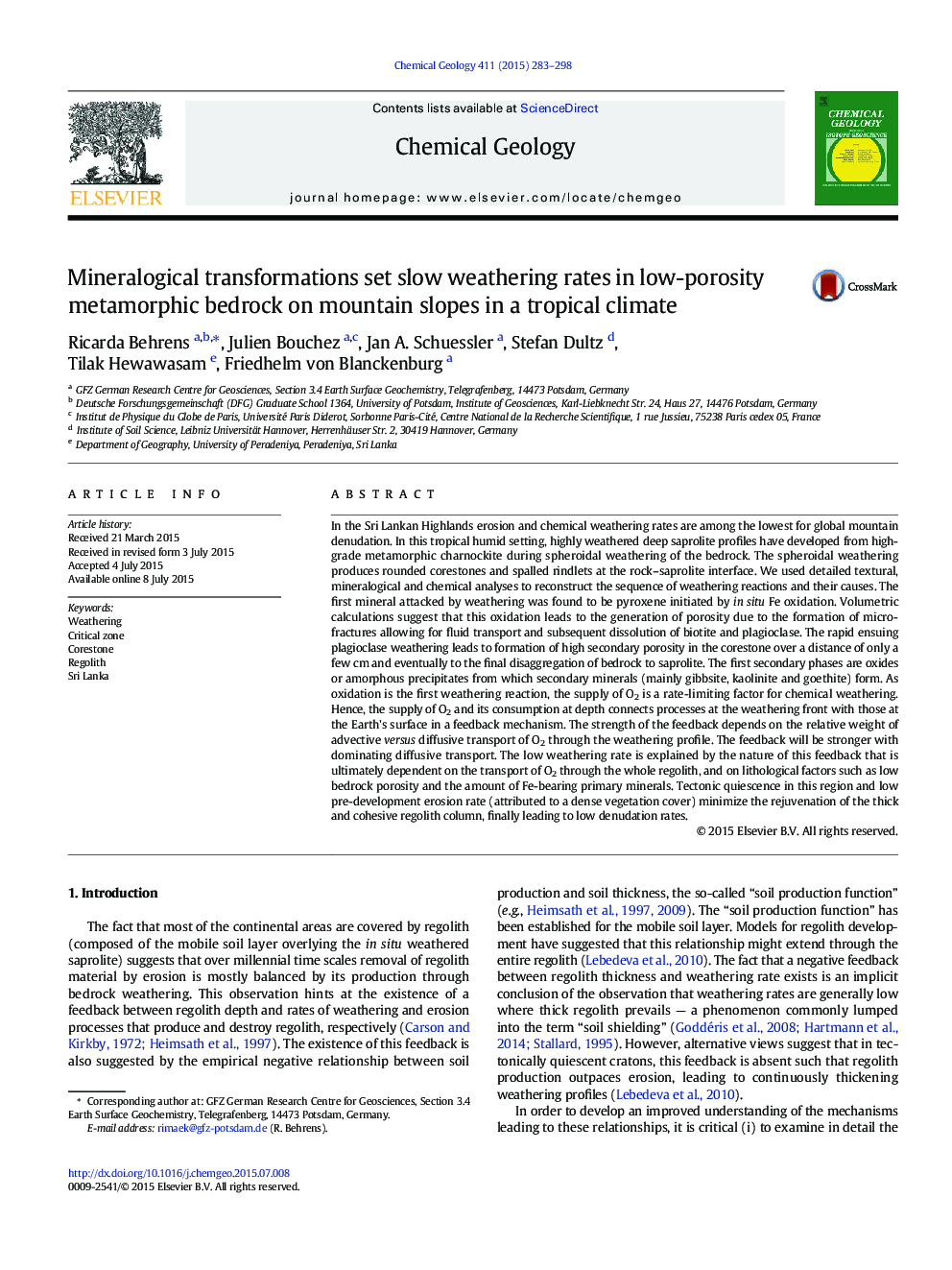| کد مقاله | کد نشریه | سال انتشار | مقاله انگلیسی | نسخه تمام متن |
|---|---|---|---|---|
| 6436354 | 1637563 | 2015 | 16 صفحه PDF | دانلود رایگان |
- Weathering is initiated by oxidation of Fe(II) bearing primary minerals.
- The interplay of fracture and porosity formation promotes conversion of rock to soil.
- The supply of O2 connects the earth surface to the weathering front.
- Bedrock physical and chemical parameters exert a strong control on weathering rates.
- Low chemical weathering rates are promoted when preferential pathways do not form.
In the Sri Lankan Highlands erosion and chemical weathering rates are among the lowest for global mountain denudation. In this tropical humid setting, highly weathered deep saprolite profiles have developed from high-grade metamorphic charnockite during spheroidal weathering of the bedrock. The spheroidal weathering produces rounded corestones and spalled rindlets at the rock-saprolite interface. We used detailed textural, mineralogical and chemical analyses to reconstruct the sequence of weathering reactions and their causes. The first mineral attacked by weathering was found to be pyroxene initiated by in situ Fe oxidation. Volumetric calculations suggest that this oxidation leads to the generation of porosity due to the formation of micro-fractures allowing for fluid transport and subsequent dissolution of biotite and plagioclase. The rapid ensuing plagioclase weathering leads to formation of high secondary porosity in the corestone over a distance of only a few cm and eventually to the final disaggregation of bedrock to saprolite. The first secondary phases are oxides or amorphous precipitates from which secondary minerals (mainly gibbsite, kaolinite and goethite) form. As oxidation is the first weathering reaction, the supply of O2 is a rate-limiting factor for chemical weathering. Hence, the supply of O2 and its consumption at depth connects processes at the weathering front with those at the Earth's surface in a feedback mechanism. The strength of the feedback depends on the relative weight of advective versus diffusive transport of O2 through the weathering profile. The feedback will be stronger with dominating diffusive transport. The low weathering rate is explained by the nature of this feedback that is ultimately dependent on the transport of O2 through the whole regolith, and on lithological factors such as low bedrock porosity and the amount of Fe-bearing primary minerals. Tectonic quiescence in this region and low pre-development erosion rate (attributed to a dense vegetation cover) minimize the rejuvenation of the thick and cohesive regolith column, finally leading to low denudation rates.
Journal: Chemical Geology - Volume 411, 14 September 2015, Pages 283-298
